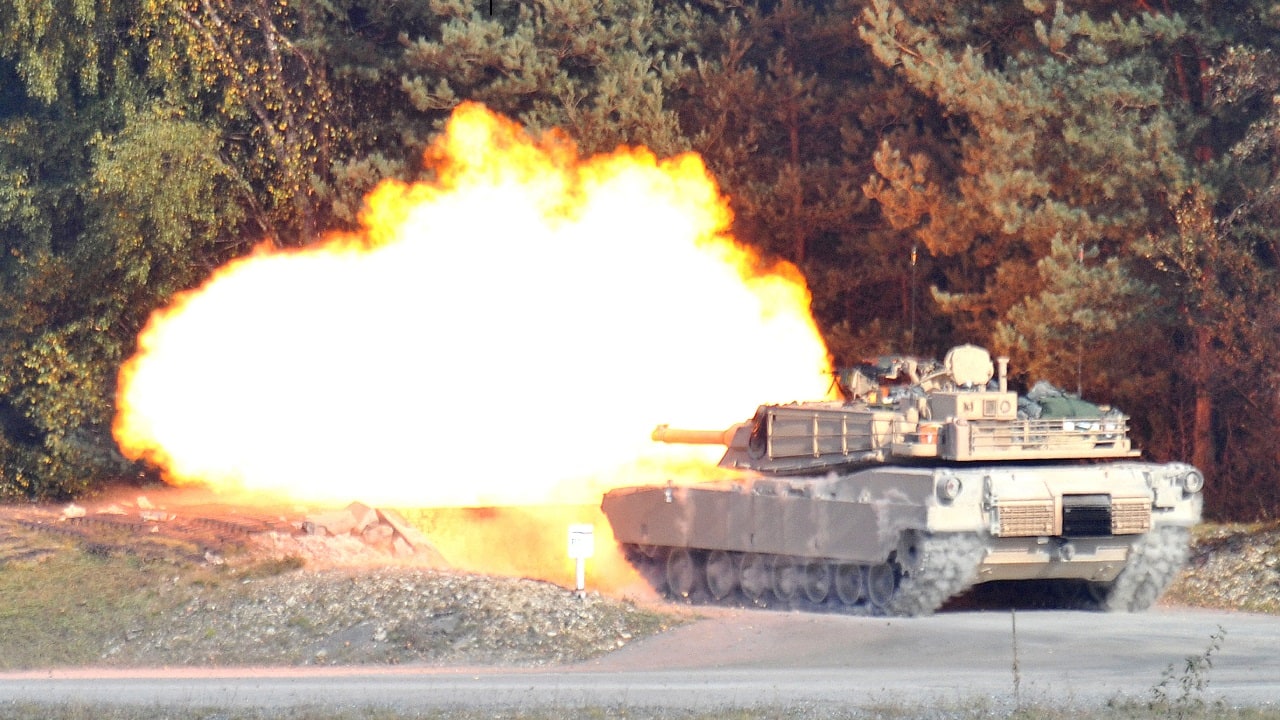Earlier this year, the U.S. and several NATO allies pledged to provide Kyiv with advanced main battle tanks. Ukrainian tank crewmen are finally preparing to train to use M1 Abrams tanks in Germany, doubtless providing a boost to the country’s counteroffensive.
In addition to the Abrams, British Challengers and German Leopard 2s are expected to lead Kyiv’s armored corps.
The White House hesitated to deliver newer Abrams variants to Ukraine, as production times would be lengthy. Instead, the U.S. agreed to transfer refurbished M1A1 variants.
Ukrainian personnel will train on Abrams MBTs at the Grafenwoehr Training Area. U.S. Army National Guard units and Ukrainian units already train together at this location.
Over the last few weeks, around 250 Ukrainians arrived in Germany, according to Voice of America. M1 Abrams tanks are expected to arrive in Kyiv by the fall.
Ukraine’s tank crewmen will first learn how to operate the Abrams, maintain them, and maneuver them in a combined arms fight. The arrival of the Abrams will not mark the first vehicle transfer provided by America. Since Russia’s invasion began in February 2022, the U.S. has shipped Bradley fighting vehicles and Stryker vehicles to Ukraine. The Abrams training process is likely to mirror previous U.S.-led training on these armored vehicles.
A Brief Overview of the Abrams M1 MBT:
The third-generation M1 Abrams MBT has contributed four decades of service in the U.S. armed forces without being replaced. Chrysler Defense (currently General Dynamics) developed the vehicle to replace the M60 Patton, which had earned recognition for its performance during the Vietnam War. While several Abrams variants have emerged over the years, the very first carried a feature that set it apart from its near-peer tanks: Chobham composite armor, a sophisticated material that was difficult for enemy tanks to penetrate. In addition to the thick armor, the Abrams sported a 120mm main gun, armor piercing capabilities, a 1,500-horsepower turbine engine, and advanced tracking systems.
Since the Abrams was developed during the height of the Cold War, U.S. armed forces initially trained with NATO partners to prepare for a potential conflict with the former USSR and its Warsaw Pact allies. The Soviet Union collapsed, however, and the Abrams made its first deployment in the Middle East. More recently, Abrams tanks were used in the 2003 invasion of Iraq, conducting thunder runs to break through Iraqi defenses.
How Will M1A1 Abrams Fare in Ukraine?
In recent months, Russian state media outlets have insisted that their antiquated Soviet-era MBTs have been mowing down Ukrainian tanks, including Western ones. A few days ago, Moscow released footage claiming to show a destroyed Leopard 2 tank.
However, analysts have determined that the vehicles engulfed in flames are actually American John Deere tractors, not German MBTs. Perhaps Russian forces will take out a few Abrams tanks as the war progresses. But these Western tanks are unquestionably superior to anything in Russia’s arsenal and will most likely fare well in the conflict.
Maya Carlin, a Senior Editor for 19FortyFive, is an analyst with the Center for Security Policy and a former Anna Sobol Levy Fellow at IDC Herzliya in Israel. She has by-lines in many publications, including The National Interest, Jerusalem Post, and Times of Israel. You can follow her on Twitter: @MayaCarlin.
From 19FortyFive
Footage Shows World War I Guns Being Used in Ukraine
‘Vacuum Bombs Destroyed’: Ukraine Footage Shows Putin’s Thermobaric Rockets Destroyed
BOOM! Ukraine Video Shows Precision Strike on Russian Air-Defense System

